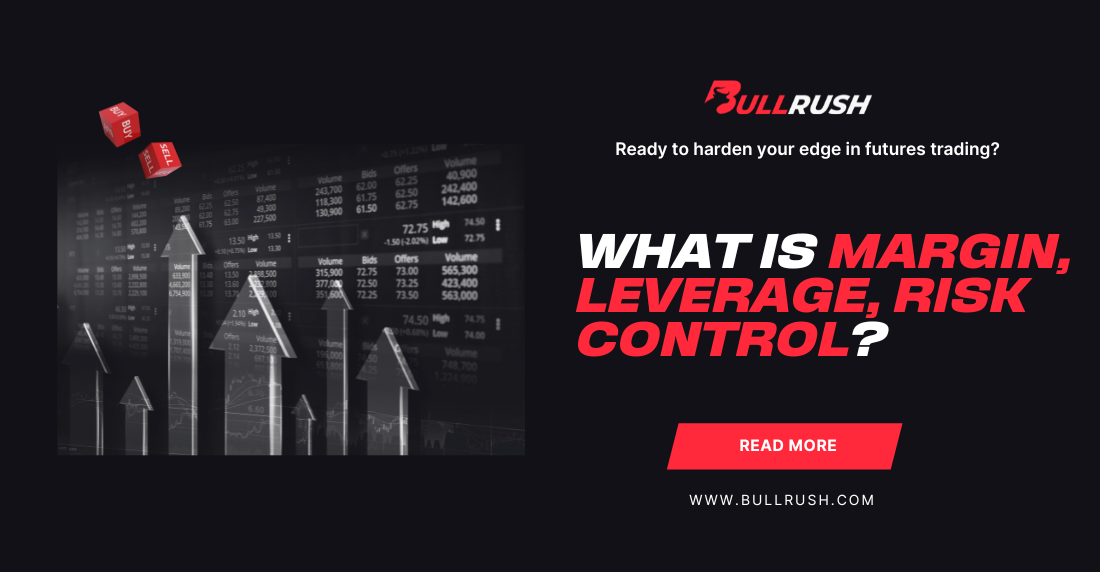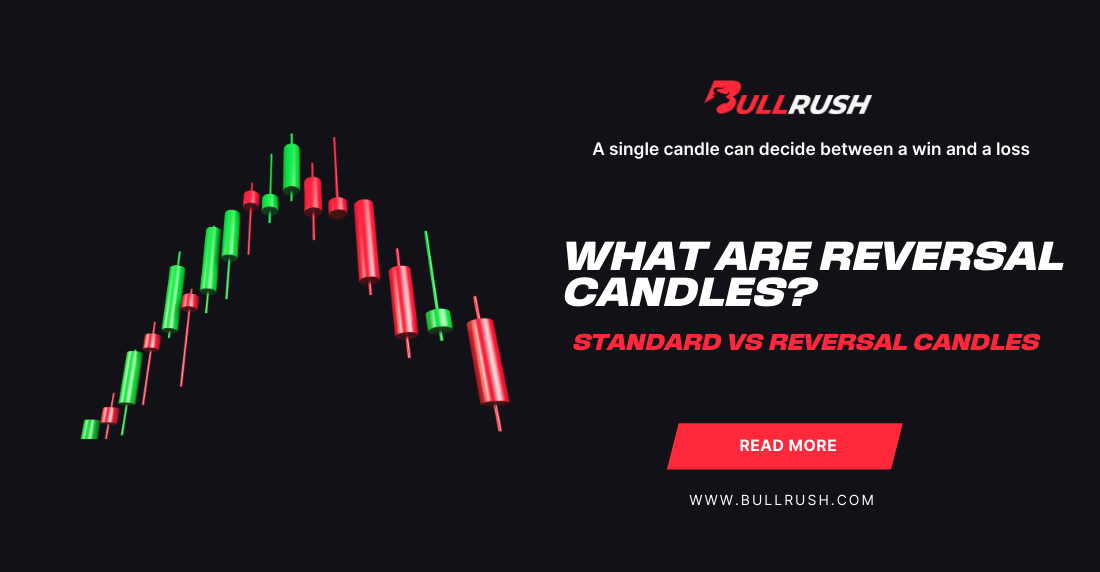
What are Margin, Leverage & Risk Control?
A 1% move in the underlying with 20× leverage doesn’t feel like “just 1%.” It’s a 20% account swing, fast. Futures trading gives you that kind of power, and if you don’t respect it, they’ll take it back with interest.
Let’s strip the mystery from margin, leverage, and risk. We’ll cover the mechanics behind the money, the math behind the moves, and the discipline that keeps you in the game.
Read it like a pre‑flight checklist, because once the market takes off, it’s too late to fix your wing.
Initial, Maintenance & Daily Settlement
Margin in futures is a performance bond, not a down payment. You post an initial margin to open the position and must maintain a maintenance margin to keep it. Your position is marked‑to‑market daily (and intraday), crediting or debiting your account as the price moves. If losses push you below maintenance, you’ll face a margin call or auto‑liquidation.
That daily settlement changes everything. Unlike spot or unlevered stock, you don’t “realize” P&L only when you close; the clearinghouse realizes it for you each session. This is why traders with good ideas still blow up: great initial thought, wrong sizing, and the daily debits knock them out before the trade can work.
Tip: Know your contract’s initial/maintenance margin and your broker’s liquidation threshold. Put those numbers on your screen.
Sum up:
- Margin = performance bond; it’s not a loan or fee.
- Mark‑to‑market crystallizes P&L every session.
- Drop below maintenance and you risk forced exits.
Leverage Math You Can’t Ignore
Leverage in futures is baked into the contract. Notional value = price × contract multiplier. Your effective leverage is notional ÷ margin posted. If the Micro E‑mini S&P (MES) trades at 5,000 and the multiplier is $5/point, one contract controls $25,000 of notional. If you post $1,250 in margin (illustrative), that’s ~20× effective leverage. A 0.5% move in the index is about a 10% swing on that margin.
Numbers change by broker and clearinghouse, but the math never does. Before you click, compute notional and translate a stop distance (in points) into dollars at risk. If you can’t do it out loud, you’re trading blind.
Tip: Say it before entry: “Notional $X. Stop Y points = $Z risk. Leverage ≈ Notional ÷ Margin.” If that sentence feels uncomfortable, size down.
Sum up:
- Notional = price × multiplier; that’s the real exposure.
- Effective leverage ≈ notional ÷ margin.
- Convert point risk to dollar risk before entry.
The Real Risks Behind the Leverage
Futures amplify volatility, gaps, and liquidity constraints. You can be right on direction and still get clipped by overnight gaps, limit‑up/limit‑down halts, or thin books around news or roll dates. Because of daily settlement, a deep adverse move can force you out at the worst possible moment.
Then there’s behavioral risk: leverage compresses time. It tempts you to widen stops, average losers, or skip your plan entirely. Risk isn’t just variance; it’s your tendency to react poorly when P&L changes quickly.
Tip: Trade fewer futures contracts than you “can,” especially overnight or into catalysts. Size is the only risk control that can’t fail when you panic.
Sum up:
- Gaps + daily settlement = liquidation risk.
- Liquidity, halts, and roll dates can distort fills.
- The biggest risk is you under pressure; plan for it.
Position Sizing That Survives
Pick a fixed risk per trade (0.5–1.0% of equity) and a mechanical stop (structure‑based or volatility‑based). Position size = (Account risk per trade) ÷ (dollars risk per contract).
For volatility, many use ATR: if ATR (14) on your entry time frame is 20 points and you place a 1×ATR stop, your dollars risk per MES contract is 20 points × $5/point = $100.
Example: $10,000 account, risk 1% = $100 per trade. Stop = 20 points on MES ⇒ $100/contract. Contracts = $100 ÷ $100 = 1. If you insist on 2 contracts, keep the same dollar risk by halving the stop distance. Not wise if it violates market structure.
Tip: If the correct size rounds to 0 contracts, that’s the market saying “not today.” Switch to micro contracts or wait for a tighter setup.
Sum up:
- Risk a small, fixed % of equity per trade.
- Convert stop distance to cash risk per contract.
- Let the math choose contracts; don’t override it.
Portfolio Context: Correlation, Offsets & Roll
Multiple positions can secretly be one big bet. Long ES and short NQ aren’t neutral if tech is leading; crude and energy equities often move together; crypto and high beta can correlate on risk‑on days. Your true risk is the portfolio’s net exposure, not the count of trades.
Know your calendar: contract months, first/last trade dates, and roll conventions. Thin liquidity during roll can widen spreads and increase slippage. Spreads can reduce margin, but only if you actually hold a proper spread, not two correlated outright positions you hope offset each other.
Tip: Keep a lightweight correlation matrix for your active markets (the last 20 sessions are fine). If correlation > 0.7, treat them as one position for risk.
Sum up:
- Correlated positions stack risk fast.
- Roll windows can degrade fills; plan exits/rolls.
- Spreads help only when they’re true hedges.
Practice Smart: Pressure‑Test Your Rules
You don’t need live risk to train live discipline. Simulated competitions create urgency (clocks), consequence (leaderboards), and constraint (rules); the same pressures that cause mistakes with real money. That’s where you proof‑test your margin math, sizing, and execution under stress.
On BullRush, you can join free or paid entry trading competitions using demo accounts with real‑time leaderboards and cash prizes. Use micro contracts, run a written plan, and review your trades after each session like a pro. Make your rules meet a scoreboard.
Tip: Before a competition, write a one‑page plan: markets allowed, max contracts, time‑of‑day rules, risk per trade/day, and “immediate stop‑trade” triggers.
Sum up:
- Competition = pressure without financial burn.
- Treat rules as sacred: risk per trade/day, max contracts.
- Review like an athlete: film, stats, adjustments.
Turn Precision Into an Edge
Margin, leverage, and risk aren’t enemies; they’re tools. When you translate points to dollars, notional to leverage, and plans to position sizes, you stop guessing and start operating. That’s how you survive long enough to get good.
Ready to harden your edge? Jump into a BullRush trading competition, stress‑test your rules against real traders, and climb the leaderboard.
Trade. Compete. Win.
FAQ: Margin, Leverage, Risk Control
Q: What’s the difference between initial and maintenance margin?
Initial is what you post to open the trade; maintenance is the minimum to keep it open. If daily settlement drops you below maintenance, you can be liquidated or required to top up.
Q: Can I lose more than my margin in the futures?
Yes. Margin is a performance bond, not a cap on loss. Severe moves, gaps, or failed liquidations can push losses beyond posted margin.
Q: How does leverage in futures compare to options?
Options embed leverage via premium and Greeks with non‑linear P&L. Futures are linear: each tick/point equals a fixed dollar value. Both can be highly leveraged, but risk behavior differs.
Q: Do brokers change margin intraday?
They can. Expect higher requirements for major events or low‑liquidity sessions. Trade smaller when requirements are a moving target.
Q: What’s a safe leverage level?
There’s no universal number, but many durable traders keep effective leverage in single digits, especially overnight. Let your drawdown tolerance dictate the cap.



